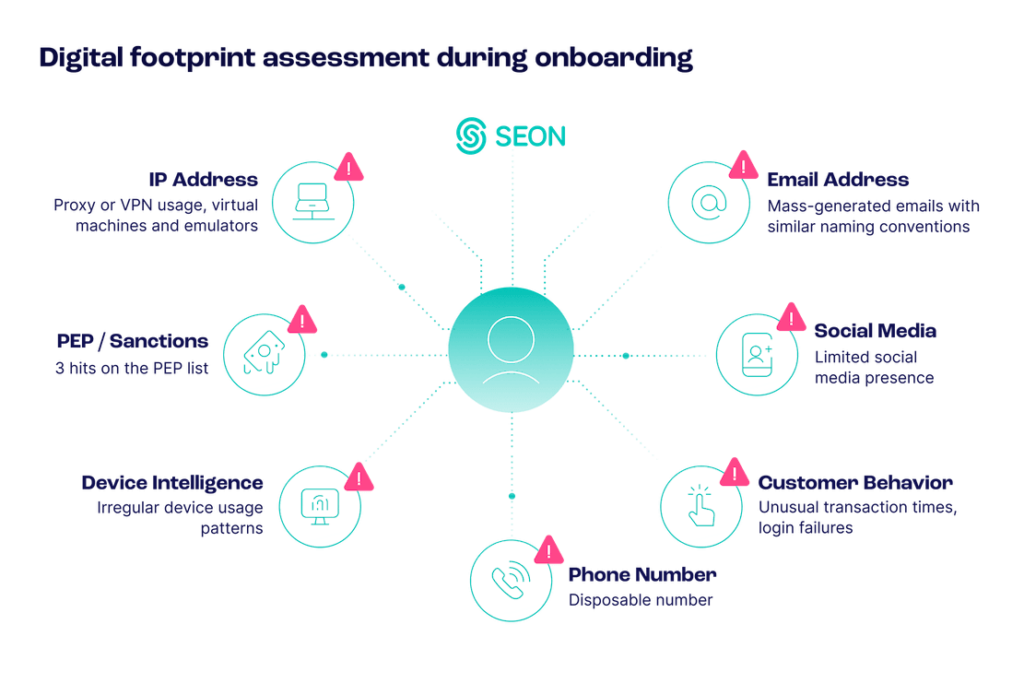As the eCommerce market continues to expand, so does the prevalence of return fraud, a growing concern for retailers navigating this competitive landscape. In 2024, fraudulent returns accounted for 15.14% of all retail returns, costing retailers a staggering $103 billion. As online shopping becomes increasingly popular, retailers must adapt their strategies to protect themselves from this insidious threat, which not only impacts their bottom line but also affects customer trust and brand reputation.
Return fraud manifests in various forms, often exploiting lenient return policies designed to enhance customer satisfaction. The challenge lies in balancing customer service with robust fraud prevention measures, a task that requires vigilance and innovative solutions. Retailers must recognize the sophisticated tactics employed by fraudsters and the organized schemes that can severely disrupt operations while still maintaining an appealing return policy for legitimate customers.
What Is Return Fraud?
Return fraud refers to actions taken by individuals to exploit a retailer’s return policy for personal gain. While designed to assist customers, return policies can be manipulated by unscrupulous individuals seeking to obtain free products or financial benefits.
Return fraud is categorized as friendly fraud when it involves purchasing products with the intent of returning them after use. Although both online and brick-and-mortar stores are affected, online retailers are particularly vulnerable due to the nature of their operations.
Differences Between Return Fraud and Refund Fraud
Return fraud and refund fraud both involve manipulating retail processes to gain financial benefits. They often occur in similar contexts—retail environments where return policies are designed to enhance customer satisfaction.
The main difference is that return fraud involves the physical return of merchandise, while refund fraud manipulates the refund process without necessarily returning any goods.
Return fraud occurs when individuals exploit a retailer’s return policies by returning items for refunds or store credit under false pretenses. This can involve various deceptive practices, such as:
- returning used or damaged items
- using stolen merchandise
- manipulating receipts.
Refund fraud is a broader category that involves making false claims to receive refunds without returning the purchased items. This can include:
- Claiming that an item was not received or was defective when it was, in fact, used.
- Submitting fraudulent requests for reimbursement for products or services never legitimately purchased.
Understanding these distinctions helps retailers better prevent both types of fraud.
What Are the Consequences of Return Fraud?
Return fraud poses significant challenges for online retailers, leading to serious repercussions that can affect their operations and profitability. In contrast, the consequences for fraudsters are often surprisingly minimal. Let’s delve into the implications for each party involved:
- For retailers: Return fraud significantly impacts online retailers, leading to substantial monetary losses and additional burdens. Retailers face wasted time and resources managing returns, along with shipping costs and administrative fees. Dealing with repeat offenders often necessitates banning them, which can result in lost customers and potentially negative reviews. Furthermore, tightening return policies to combat fraud can harm brand reputation, ultimately affecting sales and customer loyalty. As a result, retailers often find themselves accepting return fraud as a cost of doing business while striving to minimize its impact.
- For fraudsters: In contrast, return fraudsters typically experience minimal consequences. Proving and prosecuting such fraud is challenging unless it occurs on a large scale. Even when retailers succeed in legal actions against fraudsters, penalties like fines or jail time are rare; often, the only action taken is blocking the offender’s account. This can lead to fraudsters creating multiple accounts to continue their schemes without interruption.
- For stolen card owners: Victims of stolen credit card return fraud are often overlooked in discussions about consequences. Fortunately, these individuals are somewhat protected by the chargeback process, which allows them to contest unfamiliar transactions with their bank. Typically, banks will issue a chargeback to reverse fraudulent charges. However, this process can be time-consuming and stressful for victims, particularly if the fraudulent transaction results in financial distress by overdrawing their accounts or incurring additional fees.
8 Types of Return Fraud
Return fraud exists on a wide spectrum, ranging from honest shopper mistakes to malicious operations on a large scale by organized crime rings. Here are some of its common forms:
- Wardrobe or free renting: Shoppers buy items, use them once and return them. Consumers often see this as a victimless crime.
- Opportunistic: Buyers return an item after changing their minds, becoming impatient with delivery times or finding it on sale elsewhere.
- Seller sabotage: Competitors may purchase all items from a rival’s store and return them as late as possible to deplete their inventory.
- Bricking: Fraudsters return an electronic item after stripping it from valuable parts, reselling it for profit and pocketing the refund fee.
- Empty box fraud: Deceitful customers claim that they received an empty box instead of the merchandise and ask for a refund. This is also known as double-dipping fraud.
- Stolen merchandise return: The fraudster pays online with a stolen credit card and gets a cash refund upon returning the item in-store.
- Cross-retailer return/price arbitrage: Returning an identical item purchased at a lower cost to pocket the price difference.
- Price switching: Placing higher-priced labels on items with the intention of returning them for cash.
How to Prevent Return Fraud
Once return fraud occurs, there’s little you can do except report the buyer to the marketplace, delivery service, or police. Confronting the buyer, especially if they are professional fraudsters, is often futile.
Some marketplaces offer solutions. For instance, on eBay, you can block buyers with unpaid item strikes, in risky locations, or with negative feedback scores. On Amazon, there’s less protection; you must rely on their fraud detection or manually check your FBA returns reports for suspicious activity. Spotting patterns of return fraud is possible, but by then, it’s usually too late.
Here are four ways that you can follow to prevent it and protect yourself in advance.
Require ID and contact for returns
Retailers often only request a receipt when processing refunds. If an item was purchased online, it’s essential to ask for the buyer’s contact details and cross-reference them with the order. Keep notes from your risk team accessible on the shop floor or set up mandatory check-ins for flagged orders to prevent refunding items bought with stolen cards.
Eliminate cash refunds and offer credit or gift receipts
Fraud often begins with incentives. Whenever possible, offer store credits or gift receipts instead of cash refunds on returns. Criminals typically seek to launder money through your store rather than acquire items, while legitimate customers may be equally satisfied with a new purchasing opportunity.
Update your return policies
Although consumer protection guidelines dictate certain aspects of return policies, retailers can still leverage these policies to mitigate threats. For instance, weighing electronic items upon return and comparing this weight to their original can help eliminate risks associated with bricking.
Analyze your buyers’ digital footprint
Digital footprint analysis is a crucial tool in fraud prevention. This advanced solution was once exclusive to large e-tailers due to its complexity and cost, but is now more accessible and cost-effective, allowing even smaller retailers to leverage this powerful tool.
Protect your business from return fraud with digital footprint analysis while ensuring seamless customer onboarding.
Learn more
Return Fraud Detection
As businesses scale, the risk of encountering return fraud increases, necessitating the implementation of sophisticated detection methods. Employing advanced technologies and thorough analysis can help identify and mitigate fraudulent activities in real time. Key strategies include:
- Machine learning and behavioral analytics: Machine learning algorithms can process vast amounts of transaction data to identify unusual patterns and behaviors indicative of fraud invisible to the human eye. By continuously learning from new data fed into it, these systems can adapt and improve their detection capabilities, making it harder for fraudsters to bypass them.
- Digital footprint analysis: This technique involves examining the digital traces left by customers during their interactions with the online store. By analyzing elements such as the lack of social media presence, IP addresses, device information and browsing behaviors, businesses can detect inconsistencies and suspicious activities that may signal fraudulent intentions.
- Historical data analysis: Analyzing past return transactions provides valuable insights into common fraud patterns and red flags specific to a business. By identifying these patterns, retailers can develop risk profiles and take proactive measures to prevent future incidents. This historical analysis helps in recognizing repeat offenders and understanding their tactics, enabling businesses to refine their fraud detection strategies continuously.
Implementing these advanced detection techniques helps retailers stay ahead of fraudsters, protecting their inventory, reputation and bottom line.

How SEON Helps Detect and Prevent Return Fraud
Return fraud is increasingly challenging for retailers, as overly strict policies can drive away legitimate customers while lenient ones invite abuse. SEON addresses this issue by providing integrated solutions that automate fraud detection and prevention, enabling retailers to effectively manage their return policies without extensive manual oversight.
With real-time digital footprint analysis and automated transaction monitoring, SEON quickly identifies suspicious activities, such as multiple accounts created using various credit cards, which are common tactics among fraudsters. Its customizable AI-driven rules allow retailers to tailor their fraud detection strategies to specific needs, ensuring a secure shopping experience.
By combining advanced fraud detection capabilities with automated monitoring, SEON empowers retailers to combat return fraud proactively. This comprehensive approach not only protects their operations but also fosters customer trust, allowing businesses to focus on growth and innovation in a rapidly evolving eCommerce landscape.
SEON’s anti-fraud tools are designed to detect suspicious usage and uncover hidden fraudsters
Ask an Expert
Frequently Asked Questions
Analyze the patterns of previously flagged fraud orders and set up rules to monitor historically suspicious signs – customers connected to previously charged back purchases would be the prime example, as are accounts using throwaway details.
A proper fraud detection solution allows you to flag suspicious orders, while connecting your risk team with your refund processing department and setting up information sharing can help you curb fraudulent returns before they happen.
Useful Links:
Learn more about:
Browser Fingerprinting | Device Fingerprinting | Device Intelligence | Fraud Detection with Machine Learning & AI
Sources:









